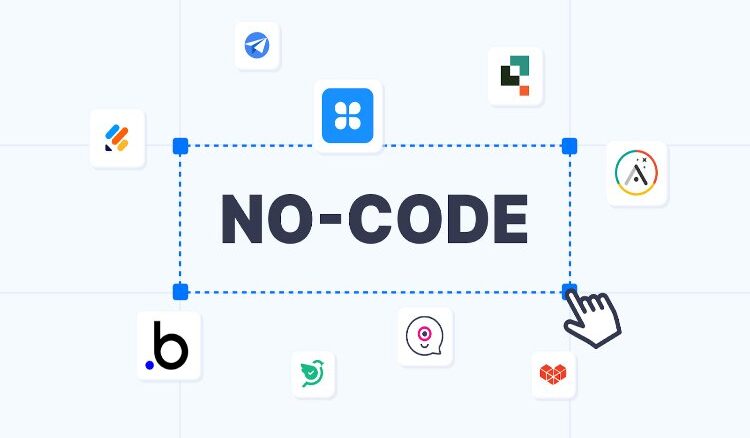
Introduction:
The process of competing with large and well-established companies is always an uphill task to startups. Large businesses usually enjoy immense resources with regard to money, workforce and advanced technology stack. By contrast, however, startups typically have to navigate lean budgets, lean teams, and pressure to produce innovation fast. However, regardless of these limitations, a number of startups are succeeding in differentiating themselves, transforming sectors and performing better than their bigger rivals in some specific territories.
Part of the reason behind this transition lies in the emergence of the no-code movement: tools that enable individuals and teams to create applications, websites, workflows, and automations without being required to write the traditional code. No-code allows the startups to move fast, implement ideas, and distribute solutions within a fraction of time and cost by eliminating the technical barriers to entry.
Speed to Market: Launch Faster with No-Code
In the case of start-ups, quickness means life. Having a minimal viable product (MVP) in the market as early as possible may make the difference between success and failure. This process is frequently hindered by traditional software development that has lengthy schedules and requires a high level of specialization on the part of programmers.
No-codes extraordinary cut down the development. Using a drag-and-drop, reusable components and pre-built templates, founders can create and ship a product in days not months. A startup can be an idea validated with a landing page or the complete app or custom CRM, but whatever the product, startups can still iterate quickly donating, learning, and adapting their product in response to real world feedback.
The rapid and iterative cycle does not only decrease time to market, but there is also less risk that too much money would be spent on a bad idea.
Cost-Effective Innovation: Building Without Huge Budgets
It has always been costly to build software by recruiting developers, designers, project managers, and others which is not an option of an already cash-strapped startup. Much of this overhead is removed by the use of no-code platforms which enable non-technical members of the team to build their own applications.
One founding team or a small team is able to accomplish what used to be done by a complete development team. It translates that startups could also use their limited capital elsewhere to progress in other critical aspects like marketing or acquisition of customers or user research. A founder may be able to easily create a working version of an app with no-code run such as Bubble Glide, or Adalo for the hundreds of dollars or zero cost, rather than spending 50,000 dollars.
Low-cost innovation also implies that you are free to experiment. Pivoting does not feel like it was a painful choice anymore as startups can test several ideas with minimal investment and then stick to one.
Agility & Flexibility: Adapting to Market Changes
Conditions in the market vary fast. The consumers change their tastes and preferences, the technologies improve, and new entrants appear. To survive under these changing conditions, startups have to be dynamic, in addition to thriving.
With No-code platforms, fast changes can be made. Have to make an update to a feature? Add a works flow? Re-design a form? There is a way to do all this in the fly, without bothering about a development sprint, or pushing a new release cycle: using no-code tools.
Such responsiveness is more difficult to do in large organizations burdened with bureaus and legacy systems. By adopting no-code, startups can move more rapidly through the iteration phase, take a user feedback in real-time, and keep up with the trend, more so than even large organizations with abundant resources and budget.
Automation & Scaling: Growing Without Heavy Infrastructure
The scaling aspect of a business tends to refer to the process of automating the operations and handling an increased workload of users. Although big businesses are able to develop their own infrastructure in the case, startups require more agile, intelligent options.
Automation or the ability to work with platforms such as Zapier, Make (Integromat) or Airtable is frequently used in no-code platforms. There is no need to hire a developer or a system administrator because startups can automate all the onboarding email messages, payment confirmations, database updates, and task assignments.
This implies that a small team will be able to perform the functions of a large one since it will have to deal with customer growth even without proportional expansion of its internal processes. Certain no-code solutions are also performance and scalability-based, which permits business firms to deal with a larger traffic volume and acceptance as they expand, avoiding premature rebuilding or porting to conventional programming in the process.
Conclusion:
No-code is not a new trend but a game changer among the startups. It also puts everyone on an epitome since the technical and financial hurdles that used to advantage big companies have been eliminated. This has given startups an effective tool to play with, so they can now compete, and even out-maneuver larger, slower corporations.
The no-code space is a rapidly growing market that is getting more dynamic and, therefore, the startup ecosystem is further strengthened with its development. Non-technical background founders can introduce their vision into reality, teams can grow more efficiently, and there is no gatekeeping.
In an era when being agile, swift, and creative is worth much more than sheerly possessing a large budget, no-code becomes the superpower that startups require to succeed.

